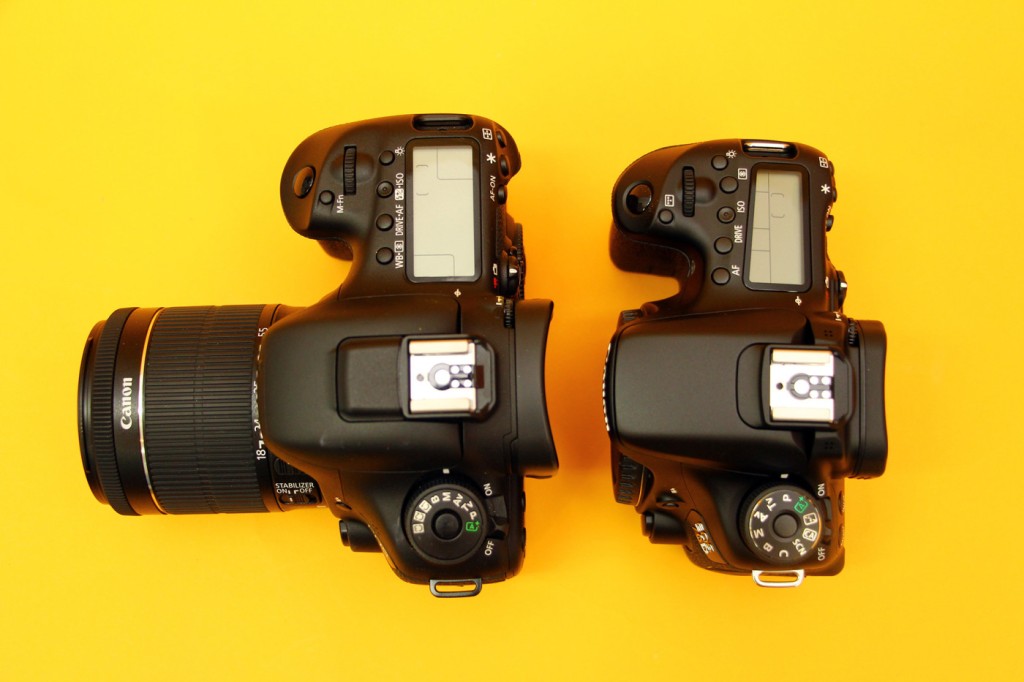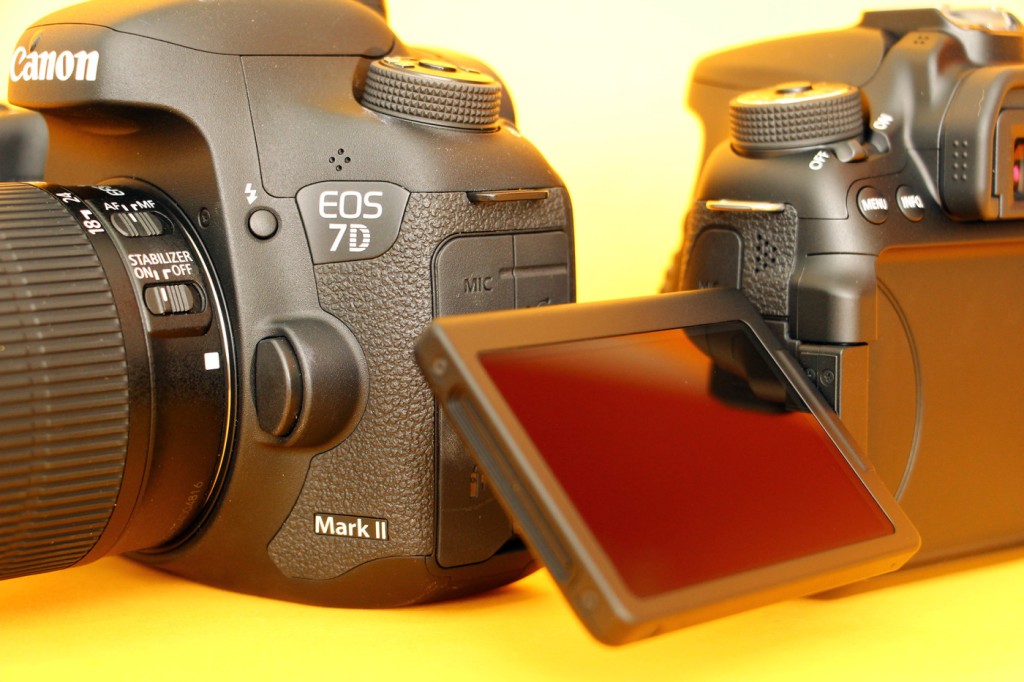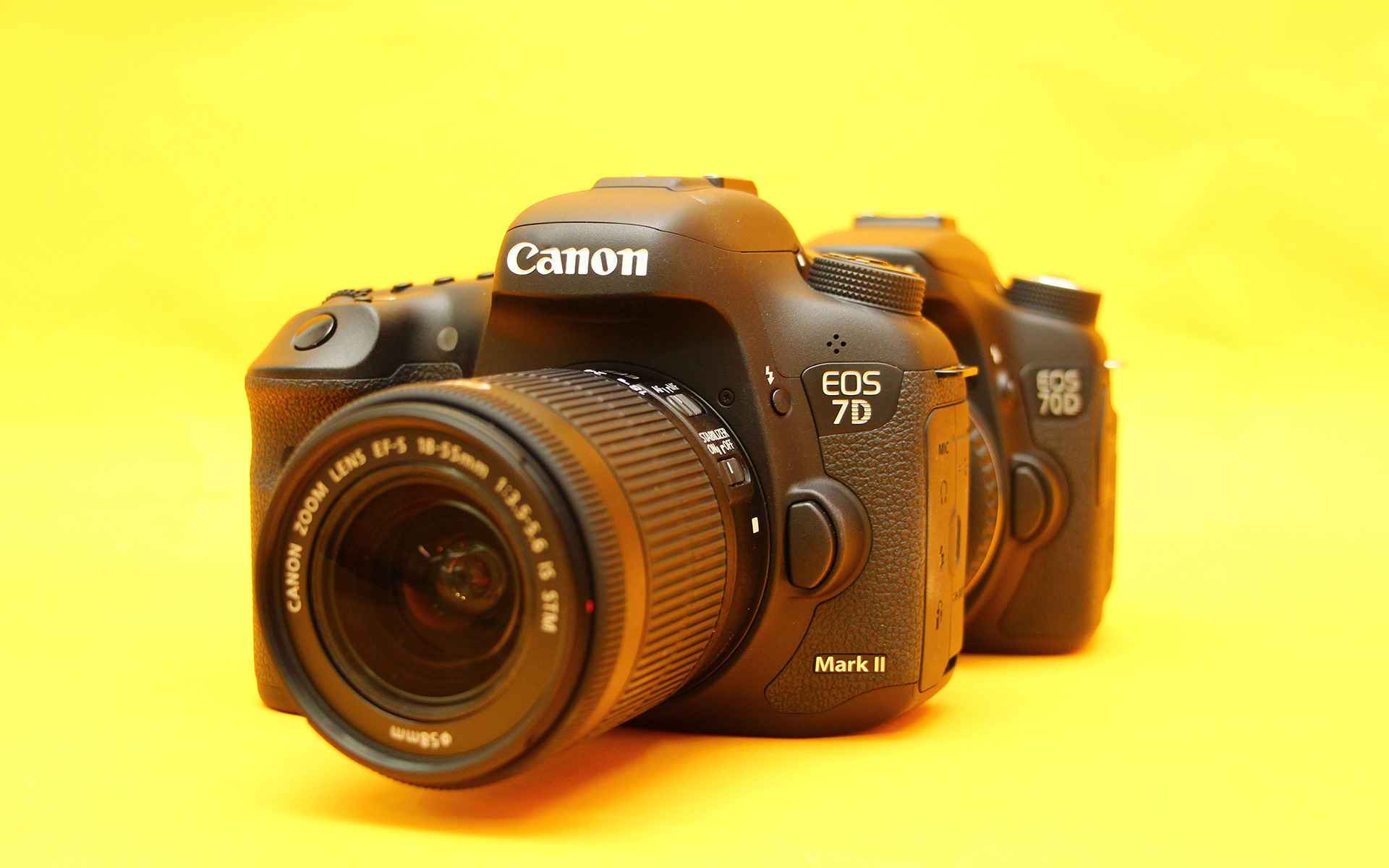In September 2014, Canon released their brand new prosumer DSLR, the EOS 7D Mk II. It has been more than 5 years since the extremely successful, original 7D was released and so many photographers have been waiting patiently to see what Canon had install for it’s latest flagship APS-C camera body. In this review I want to look at the main features of the new EOS 7D Mk II, to take a look at how it compares to its well spec’ed and cheaper little brother the EOS 70D and then discuss which one you should buy.
If you take a look at the spec sheet of the 7D Mk II you are not going to be jumping out of your seat in amazement. The EOS 7D Mk II comes fitted with the same 20.2MP sensor as the EOS 70D. The 7D Mk II is definitely more of an update to the original 7D as opposed to something innovative. There have however been some updates that may be of interest to photographers looking to upgrade:
| 7D MII | 70D | |
|---|---|---|
| Sensor Resolution | 20.2 Million | 20.2 Million |
| Base ISO | ISO 100 | ISO 100 |
| Native ISO Range | ISO 100-16,000 | ISO 100 – 12,800 |
| Continuous Shooting Speed | 10FPS | 7FPS |
| Buffer Size | 31 RAW | 16 RAW |
| Max Shutter Speed | 1/8000 | 1/8000 |
| Movie Settings | 1080p 24, 25, 30, 50 and 60fps | 1080p 24, 25, 30 and 720p 50 and 60fps |
| HDMI Clean Out | X | |
| Number of AF Points | 65 Cross Type | 19 Cross Type |
| Viewfinder Coverage | 100% | 98% |
| LCD Screen | 3″ | 3″ Swivel |
| WiFi | X | |
| Weight | 910g | 880g |
| Dimensions | 149 x 112 x 78mm | 139 x 104 x 79mm |
Camera Build
When the EOS 70D was released last year, it came with weather sealing that was comparable to the flagship APS-C camera at the time, the EOS 7D, which according to Canon took it’s own weather sealing from the EOS 1 line up when it was released back in 2009. This was a big step up for mid range APS-C cameras and so many photographers will be looking for the EOS 7D Mk II to expand on that.

For those photographers who rely on weather sealing, you will be glad to know that the EOS 7D Mk II has stepped up the playing field and, if you listen to Canon’s marketing hype, has weather sealing that is more than 4 times more resistant to water and dust than the original 7D and the newer 70D. This gives you more protection when you are shooting out in the harshest of weather. The 7D Mk II body is also made from magnesium alloy that will give it a slightly better durability and build quality compared with the 70D. The extra protection against damage is great if you are using your camera in tough conditions. Wildlife and sports photographers will appreciate this extra durability to their bodies when they might find themselves shooting in a mixture of weather conditions from torrential rain to blistering sun.
AF System
When Canon released the EOS 7D Mk II last month they spent quite a lot of time hyping up the AF system updates. The EOS 7D Mk II now comes with an impressive 65 cross type AF point system, giving it more cross type sensors than even their flagship 1D X that has 61. This new AF module makes focussing extremely fast and accurate and light years ahead of the cheaper models like the EOS 70D.
Speed
The 70D comes with a fast frame rate of 7FPS. This means that the camera will be more than capable of shooting most moving subjects sufficiently well. For amateur and weekend hobbyists this is a great feature for shooting local sports or wildlife.
The EOS 7D Mk II now comes with an impressive 65 cross type AF point system, giving it more cross type sensors than even their flagship 1D X that has 61.
The EOS 7D Mk II however takes this up one more step and comes with a burst rate of 10FPS. This is seriously quick and puts the 7D firmly in the realm of mini-1D X. The buffer of the 7D Mk II is also an improvement over the 70D with buffer sizes of 31 and 16 RAW files respectively.
Low Light
ISO range is one area where these two cameras are very similar. The 70D has an ISO range that goes all the way to 12,800 ISO, whereas the 7D Mk II takes that only 1/3 stop higher to 16,00 ISO. In real life use these two cameras will shoot almost equally in low light with the 7D Mk II producing slightly better results at the highest ISOs due to it’s upgraded Dual Digic 6 processor for most web and print use the files will be almost indistinguishable.
Video
The original EOS 7D has become a bit of a cult icon for it’s great video recording performance. The 7D set the bar for DSLR video work and even today many people still use it for film work.
The 70D was also a revelation in DSLR filmmaking as it’s brand new Dual Pixel CMOS AF system made, for the first time, video AF a reality (albeit with a few hiccups). The 7D Mk II has inherited this system of Dual Pixel AF and so it will be interesting to see if it gets rolled out on all new Canon products as standard.

The biggest improvement with regards to video in the 7D Mk II is in its ability to shoot in 60p at a resolution of 1080p. This is great as all the cameras before were restricted to using a smaller sensor. Another area Canon has improved on is the fact that the 7D Mk II can also now offer uncompressed clean HDMI. If you are thinking of using an external recorder like an Atmos then this is great new feature.
Conclusion
When you get down to comparing the 70D and 7D Mk II you realize that they are similar in many ways. The price of the 7D Mk II is obviously quite a bit higher however. The difference in price can seem a little steep when comparing purely on specs but I think that if you are shooting fast moving subjects, shooting with long lenses or shooting in harsh weather then the 7D Mk II is a worthy step up from the 70D. If I was a current owner of the original 7D, the question of whether to upgrade may be a bit trickier. The major upgrade from the original 7D is the AF system but if that is not so important to you, the rest of the spec sheet is remarkably similar.
The 7D Mk II is certainly not a flawless camera, omissions such as not including WIFI, limiting time lapse to 99 shots and a lack of articulating screen makes the 7D Mk II look to me a little behind the times. When manufacturers like Sony, Fuji and Panasonic are releasing innovative cameras, Canon seem to be relying on their reputation to sell new cameras.
The 7D set the bar for DSLR video work and even today many people still use it for film work.
If I had to choose between either the 7D Mk II and 70D as an all round camera for my own travel work, my money would probably go to the 70D. It’s smaller, lighter and in the majority of scenarios the image quality will be almost indistinguishable. Saying that, if I was a sports or wildlife photographer then I would definitely buy the 7D Mk II due to the extra durability, speed and AF. It’s all down to your own individual needs and so which one to buy will be a completely personal decision. If you need the speed, get the 7D Mk II, if not save your money, buy the 70D and spend the rest on actually going out and using the camera.

